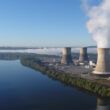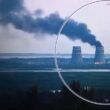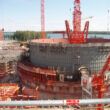Moving beyond the nuclear option
By Jill Marie Parillo, December 23, 2008
President-elect Barack Obama has shown with his political appointments, campaign statements, and energy plans that his administration’s take on nuclear power won’t be a complete revolution from the Bush era, but rather a thoughtful series of evolutionary steps.
Obama said during the campaign that “nuclear [power] should be in the mix,” as Miles Pomper mentions, but Obama also ended that sentence with, “if we can make it safe.” The Obama administration will continue to encourage the national laboratories, academia, and industry to research–but not develop–waste-management tools, and continue efforts to examine reprocessing and advanced fuel-cycle technologies under programs such as the Advanced Fuel Cycle Initiative. But any near-term plans for commercial-scale construction for such facilities, as called for in the Global Nuclear Energy Partnership (GNEP), will likely be halted.
As the new administration continues funding research, it will also continue to uphold the country’s Nuclear Non-Proliferation Treaty obligations by assisting nations in evaluating their readiness for nuclear power, according to experts such as Jon Wolfsthal, who has held positions at the Energy Department and is currently a senior fellow at the Center for Strategic and International Studies. U.S.-sponsored studies that evaluate a country’s ability to finance a nuclear program, the appropriateness of its electrical grid for a new reactor, and whether it can initiate proper nuclear safety and security measures most likely will all continue under Obama and could serve other purposes than facilitating the sale of nuclear reactors to foreign nations as they did during the Bush administration. Such studies have proven revealing, for example, that Jordan, a country that has been interested in building a reactor, is far from ready in the near term–a proposed 1,000-megawatt reactor would overload its entire electricity grid, which can handle only 2,500 megawatts.
Other international components of GNEP could also continue in the Obama administration. The GNEP radioactive waste working group, which fosters discussion among 50 or so international energy ministries on topics ranging from radioactive waste disposal to regional repositories, may be worthwhile to continue. The Bush administration’s habit of sidestepping oversight on such policies, however, may make it impossible to build the trust necessary in Congress to fund even these beneficial pieces of GNEP.
Through continued nuclear energy research under the new administration, better waste solutions and “a cost-efficient, safe way to produce nuclear energy,” as Obama has said he would like to develop, may be discovered. But it’s doubtful that such discoveries will be made before renewable energy sources become a viable solution for countries looking to dramatically boost their energy capacities in the next 50 years. As soon as developing nations receive financial incentives to build a renewable energy infrastructure, the green energy revolution will really start rolling and nuclear power, with its burden of nuclear waste, will no longer be seen as a viable option.
That said, a strong green energy revolution won’t make the nuclear option simply disappear. Some states see gaining nuclear fuel-cycle capabilities, and with it the potential for nuclear weapons, as a boon to their global power and prestige. The nine (recognized and unrecognized) nuclear weapon states will need to work together to decrease that allure. The creation of global multilateral enrichment centers could create a system in which no single state manages and owns its own facilities. This could curb the desire of states to build their own enrichment centers and speed up the natural evolution away from all things nuclear.
Topics: Nuclear Energy
Share: [addthis tool="addthis_inline_share_toolbox"]














